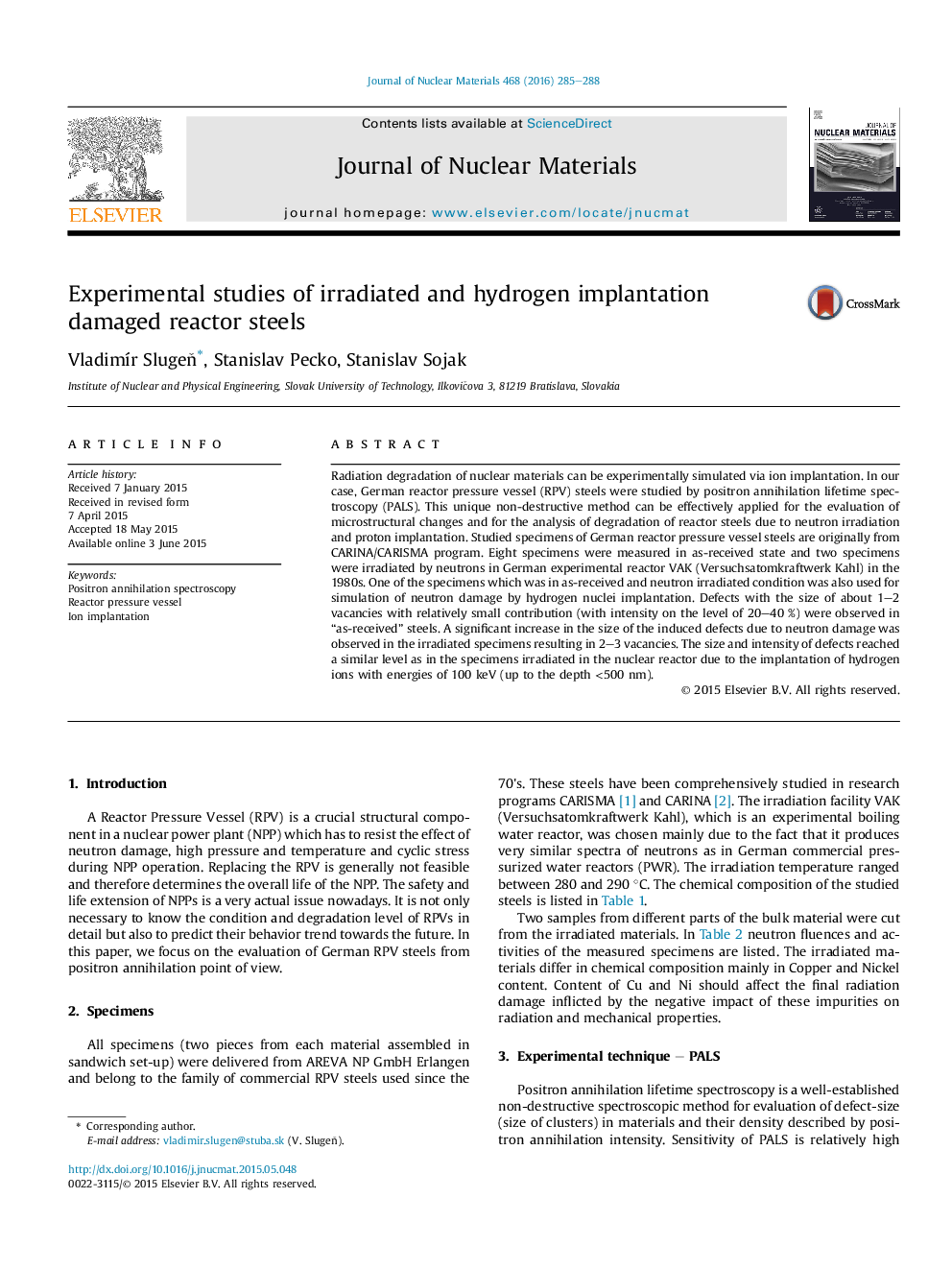| Article ID | Journal | Published Year | Pages | File Type |
|---|---|---|---|---|
| 1564843 | Journal of Nuclear Materials | 2016 | 4 Pages |
Abstract
Radiation degradation of nuclear materials can be experimentally simulated via ion implantation. In our case, German reactor pressure vessel (RPV) steels were studied by positron annihilation lifetime spectroscopy (PALS). This unique non-destructive method can be effectively applied for the evaluation of microstructural changes and for the analysis of degradation of reactor steels due to neutron irradiation and proton implantation. Studied specimens of German reactor pressure vessel steels are originally from CARINA/CARISMA program. Eight specimens were measured in as-received state and two specimens were irradiated by neutrons in German experimental reactor VAK (Versuchsatomkraftwerk Kahl) in the 1980s. One of the specimens which was in as-received and neutron irradiated condition was also used for simulation of neutron damage by hydrogen nuclei implantation. Defects with the size of about 1-2 vacancies with relatively small contribution (with intensity on the level of 20-40 %) were observed in “as-received” steels. A significant increase in the size of the induced defects due to neutron damage was observed in the irradiated specimens resulting in 2-3 vacancies. The size and intensity of defects reached a similar level as in the specimens irradiated in the nuclear reactor due to the implantation of hydrogen ions with energies of 100Â keV (up to the depth <500Â nm).
Related Topics
Physical Sciences and Engineering
Energy
Nuclear Energy and Engineering
Authors
VladimÃr SlugeÅ, Stanislav Pecko, Stanislav Sojak,
